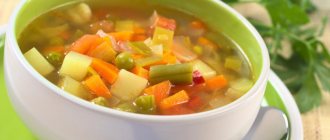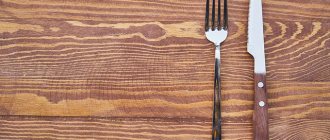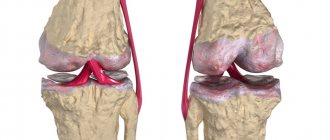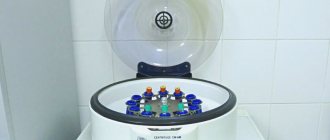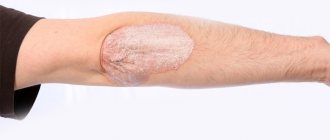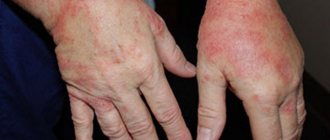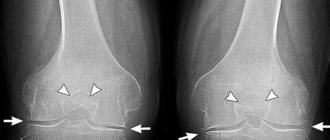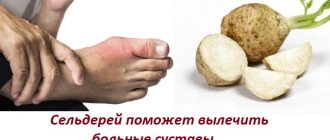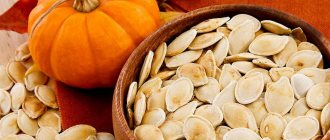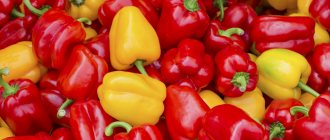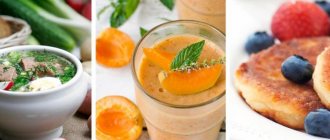11/27/2019 Article
- general characteristics
- Table "Do's and Don'ts"
- Menu for the week
The “6 table” diet is used in the treatment of urological diseases. Indications for using the diet are:
- gout,
- urolithiasis with the formation of stones from uric acid (uraturia),
- uric acid diathesis,
- oxaluria,
- cystinuria.
The essence of the diet is to limit salts, proteins, fats and exclude products that contain extractive nitrogenous substances, purines and oxalic acid. The diet consists largely of vegetables, fruits and dairy products.
General characteristics of dietary table No. 6
Diet No. 6 satisfies human physiological needs for nutrients and energy, and is enriched with plant fiber. Nitrogenous extractives (purines), oxalic acid, and foods rich in essential oils are sharply limited. Meat, poultry and fish - no more than 3 times a week in small pieces. Food is prepared steamed, boiled and baked. Diet No. 6 provides for fractional meals 4-6 times a day. You must drink permitted drinks on an empty stomach and between meals.
What can you eat if you have gout?
| The best diet for gout is a vegetarian diet. These are various vegetable and milk soups, fermented milk products, fruit infusions. From meat to diet for gout It is recommended to include primarily dietary species - chicken, turkey, rabbit. Chicken eggs, boiled fish, squid, and shrimp are allowed. When following a diet for gout, low-fat cottage cheese and dishes made from it, low-fat varieties of cheese are very useful. Porridges from various cereals and pasta are recommended. Porridge is cooked in diluted milk. Use whole milk with caution. Almost all types of vegetables are recommended - white cabbage, carrots, potatoes, cucumbers, zucchini, eggplant. Somewhat limit cauliflower, asparagus, spinach, rhubarb, celery, peppers, radishes. Greens are useful, but green onions and parsley - in small quantities. Non-chocolate candies, jam, marmalade, marshmallows, and marshmallows are allowed as sweets. Fruits are very useful - apples, plums, pears, apricots, oranges, as well as various berries, all types of nuts, seeds. A diet for gout involves limiting salt intake. |
The gout diet allows the following drinks - green tea, tea with lemon, milk, chicory, rosehip infusions, wheat bran, fruit juices, berries, vegetables, fruit drinks, kvass, compotes. Drinks made from lingonberries and cranberries are especially valuable. Cucumber juice (up to 1 glass per day), alkaline mineral waters (low mineralized) help remove excess purines from the body.
White and black bread are allowed. Vegetable oil is better (olive, flaxseed is a must), but butter is limited.
When the disease worsens, meat and fish are limited or even completely eliminated, and every other day they arrange fasting days (fruit and vegetable days - 1.5 kg of permitted vegetables or fruits); curd-kefir (400 g low-fat cottage cheese +500 g kefir); milk or kefir (1 - 2 liters). This diet promotes alkalinization of urine and increases the solubility of uric acid.
Outside of an exacerbation, meat and fish are allowed (no more than 3 times a week), but only boiled ones, since more than half of the purine substances go into the broth. From boiled meat (fish) it is good to make cutlets, meatballs, soufflés; you can also steam and bake dishes. Vegetables and potatoes are boiled or steamed.
During all periods of the disease, gout diet No. 6 and periodic fasting days (compote, cottage cheese, milk, apple, carrot, watermelon) are recommended.
Chemical composition and energy value of dietary table No. 6
Proteins: 85–90 g (40–45 g animal proteins). Fats: 70–80 g (including 30 g of vegetable fats). Carbohydrates: 300–330 g (including no more than 30–40 g of simple carbohydrates). Daily calorie content: 2,200 – 2,400 kcal. Free liquid: 1.5–2 l. Table salt: 6–8 g Vitamins: retinol (A) – 0.5 mg, riboflavin (B2) – 2 mg, thiamine (B1) – 1.5 mg, nicotinic acid (B3) – 15 mg, ascorbic acid ( C) – 150 mg. Macroelements: sodium – 4 g, potassium – 3.5 g, calcium – 0.8 g, magnesium – 0.5 g, phosphorus – 1.3 g. Microelements: iron – 35 mg. Optimal food temperature: from 15 to 65 degrees Celsius.
Diet for gout: diet
If you have gout, it is very important to follow a proper diet. You should eat regularly, 4 times a day. Overeating and starvation are unacceptable - this can provoke an attack. Patients with gout need to fight excess weight, but sudden weight loss is undesirable.
The diet for gout must include a sufficient amount of fluid - at least 1.5 - 2 liters, and during an exacerbation - up to 3 liters.
This can be mineral water, compotes, fruit drinks, weak tea. Rosehip decoction is very useful. It is advisable to drink between meals.
Recommended products and dishes of the diet table No. 6
Bread: any. Soups: vegetarian vegetable and cereal soups. Meat dishes: lean meat and poultry must be boiled first and only then used for cooking. Fish dishes: lean fish must be boiled first and only then used for cooking. Side dishes: any cereals – in moderation; any vegetables. Dairy products: milk, cottage cheese; any fermented milk products, fresh and in dishes. Eggs: no more than 1 egg per day in any form. Appetizers: vegetable salads from fresh, soaked, pickled vegetables. Sauces: vegetable (including tomato), dairy. Sweet dishes: any fruits and berries in any form in increased quantities, especially citrus fruits; jelly, milk cream, marshmallow, marmalade, marshmallow, jam, honey. Drinks: weak tea and coffee with and without milk, bran decoction, rosehip decoction, juices, alkaline mineral waters. Fats: fresh vegetable oil.
Prohibited Products
For patients with gout, rich meat and fish broths, as well as soups based on them, are strictly prohibited. When cooked, they accumulate a huge amount of purine bases. Consuming even 100 ml of broth is highly likely to provoke another relapse of the disease. What else should be completely excluded from your diet:
- offal, fatty and lean red meat - pork, beef, lamb;
- fatty sea and river fish - herring, salmon, mackerel;
- seafood and red caviar;
- homemade and factory-made marinades, pickles and other preserves;
- seasonings and sauces - horseradish, mustard, black and allspice, mayonnaise, ketchup;
- cheeses rich in salt and spices,
- chocolate and other desserts with cocoa, sweet and savory pastries, protein, butter and custard;
- sorrel, spinach.
Nutritionists recommend not consuming or significantly limiting mushrooms in the daily menu. This is also true for asparagus, celery, radishes, bell peppers, cauliflower, legumes, and pasta.
Features of fasting days
The diet for gout excludes complete fasting, since it provokes an exacerbation of the disease. On fasting days, it is recommended to adhere to mono-diets (watermelon, potato, cucumber, carrot) or prepare salads, slices, stews from different types of vegetables and fruits.
The consumption of dairy products and cereals in small quantities is allowed. Fasting days on rice are popular: it is boiled in milk and eaten with the addition of a small amount of grated apple in small portions.
A fermented milk diet will help you quickly get rid of excess uric acid: it involves eating only cottage cheese (400 g) and kefir (0.5 l) during the day.
Uric acid diathesis and diet No. 6
Diet table No. 6 is recommended by many specialists for uric acid diathesis, as well as for urolithiasis. The main goal of this diet is to normalize purine metabolism and reduce the concentration of uric acid and its salts in the body. The diet consists of foods containing a minimum of oxalic acid and purines. The menu is almost exactly the same as for gout.
Menu for table No. 6
Sample menu for a week for patients with gout and urolithiasis.
First day
Breakfast: cottage cheese pancakes, honey, chamomile decoction.
Lunch: a handful of prunes, homemade compote.
Lunch: soup with rice and bell pepper, mashed potatoes with stewed meat (70 g), bread.
Dinner: grilled or oven-baked vegetables, boiled beef (80 g).
Before bed: decoction of rose hips.
Second day
Breakfast: oatmeal with pieces of ripe apple and banana, chicory with milk.
Lunch: bran bread toast, jam, alkaline mineral water.
Lunch: milk soup with noodles, fresh vegetable salad.
Dinner: a piece of fish, stewed carrots and zucchini, bread.
Before bed: natural drinking yogurt.
The third day
Breakfast: soft-boiled egg, boiled milk sausage, fresh cucumbers, chicory drink.
Lunch: cottage cheese pasta with fresh fruit.
Curd paste: rub 200 g of low-fat cottage cheese through cheesecloth or a fine sieve. In a separate bowl, grind 50 g of sugar, 10 g of vanillin and 15 g of unsalted butter. Combine the two masses and add two tablespoons of sour cream, stir everything well. The finished paste can be used as a separate dessert or mixed with fruits and prunes.
Lunch: vegetarian beetroot soup, a little sour cream, pasta with chicken quenelles.
Dinner: potato casserole with hard cheese.
Casserole with cheese: cut raw potatoes into slices and place in a greased pan, alternating with grated cheese. The last layer should be cheese, put a few pieces of unsalted butter on it and pour over 100 ml of milk. Bake under foil or lid.
Before bed: chamomile decoction.
Fourth day
Breakfast: potato pancakes, sour cream, green tea.
Lunch: cottage cheese with mashed prunes and nuts, milk.
Lunch: soup with rice, potatoes and vegetables, vinaigrette, separately steamed meatballs, bread.
Dinner: fish jackdaws, steamed carrots, green beans.
Fish jackdaws: mince 200 g of pike perch fillet (with skin included). Pour 50 ml of milk into the minced meat and add 10-15 g of starch. Form oblong jackdaws and place them in boiling salted water for 10 minutes.
Before bed: bran decoction.
Day five
Breakfast: omelette of one egg, milk and wheat flour, vegetable salad, tea.
Lunch: fresh fruit (salad or smoothie), some walnuts.
Lunch: borscht without meat, sour cream, buckwheat porridge.
Dinner: pilaf with prunes, freshly squeezed juice.
Before bed: milk.
Day six
Breakfast: apple and carrot salad, toast with jam, chicory.
Lunch: berry jelly or jelly.
Lunch: tomato soup, oatmeal, rabbit or beef cutlet, bread.
Dinner: stuffed peppers with sour cream.
Before bed: fresh carrots.
Day seven
Breakfast: sandwiches with cheese, plain yogurt, tea.
Lunch: cottage cheese, berry juice.
Lunch: soup with barley and vegetables, potato cutlets in sour cream.
Dinner: a piece of boiled lean pork, fresh vegetable salad, buckwheat porridge.
Before bed: kefir.
Patients with gout are prescribed fasting days, 1-2 times a week. To unload, you can choose one product and eat only it throughout the day. Low-fat or calcined cottage cheese is well suited for such purposes. On a fasting day, you need to consume 150 g of it every time you feel hungry. It is forbidden to completely starve, this leads to even greater accumulation of uric acid in the blood.
So, for uric acid diathesis and gout, table number 6 is used. The diet excludes foods that contain a lot of purines. The therapeutic menu consists of alkaline foods that help remove breakdown products of nitrogenous substances from the body. As a result of such a diet, the patient gradually normalizes the correct process of excretion of uric acid, urine stones are broken down and new ones do not form.
Dish recipes
- Time: 30 minutes.
- Number of servings: 2 persons.
- Calorie content of the dish: 60 kcal.
- Purpose: for breakfast.
- Cuisine: Russian.
- Difficulty: easy.
The purine diet for gout involves eating light meals that are quickly digested without putting strain on the digestive tract. Vegetable puree soup is perfect for breakfast or snack. It is good to use lemon juice and sunflower oil as a dressing, and you can add a little natural cream for taste. To make this you will need a blender.
Ingredients:
- carrots – 1 pc.;
- onion – 1 head;
- lemon juice – 2 tsp;
- sugar – ½ tsp;
- sunflower oil – 20 ml;
- cream – 30 ml;
- potatoes – 3 pcs.
Cooking method:
- Rinse the vegetables, peel, finely chop, place in boiling water and cook for 15 minutes.
- Season with salt, mixed herbs and pepper, and cook until tender, about 8 minutes.
- Blend until puree, add lemon juice.
- Serve with cream.
The following recipe can be used as a dessert or main dish. You don’t have to cook separately from your family – the whole family will love this casserole.
- Time: 45 minutes.
- Number of servings: 2 persons.
- Calorie content of the dish: 110 kcal.
- Purpose: for dessert.
- Cuisine: Russian.
- Difficulty: easy.
Dietary table 6 for gout should include a lot of cottage cheese, because the calcium it contains has a positive effect on joint health. This cottage cheese casserole is perfect for dessert or as a snack. To make it, it is better to choose low-fat 1% cottage cheese; for sweetness, you can add a little dried fruit - raisins, dried apricots or prunes.
Ingredients:
- eggs – 3 pcs.;
- semolina – 100 g;
- sugar – 100 g;
- cottage cheese – 2 packs;
- low-fat sour cream – 1 cup;
- dried fruits - a handful;
- salt - to taste;
- soda slaked with lemon juice - on the tip of a knife.
Cooking method:
- Mash all the ingredients thoroughly, add soda and dried fruits.
- Place the mixture into a baking dish.
- Bake in the oven at 180 degrees until a light golden brown crust appears.
Approximate diet
Diet No. 6 brings noticeable relief both during an exacerbation of gout or urolithiasis, and during the period of recovery from these ailments
A person prepares the “Table 6” diet for gout every day independently. The official diet provides only examples of dishes that can be adopted. Your doctor will give you precise recommendations on strict adherence to the menu.
The daily ration of the “Table 6” diet for gout necessarily includes about 2-3 liters of liquid. Salt can be consumed no more than 5 g.
Monday
- Breakfast: oatmeal with berries, tea, yesterday's bran bun
- Second breakfast: fruit salad
- Lunch: tomato soup, steamed chicken cutlets
- Second lunch: bell pepper and white cabbage salad
- Dinner: cottage cheese casserole with bananas
2-3 hours before going to bed, you can eat an apple or drink a glass of kefir. This late-night snack can be done any day. During the day, you should drink mineral water with an alkaline composition, rosehip decoction, and chicory.
Tuesday
- Breakfast: boiled egg, cucumber and tomato salad, rye toast
- Second breakfast: 100 g low-fat cottage cheese with a spoon of honey
- Lunch: potato soup with chicken meatballs, rice with vegetables, rosehip broth
- Second lunch: salad with seaweed, apple
- Dinner: fruit salad, a glass of low-fat kefir
Wednesday
- Breakfast: buckwheat porridge with milk diluted with water
- Second breakfast: cheesecake with honey
- Lunch: vegetarian borscht, beet salad, steamed fish cutlets
- Second lunch: salad of white cabbage and carrots, jelly with berries
- Dinner: rice with vegetables
Thursday
Cabbage and tomato salad - tasty and healthy
- Breakfast: boiled beet salad with low-fat sour cream, rye bun
- Second breakfast: cabbage and tomato salad
- Lunch: onion soup with croutons, pearl barley porridge with cabbage cutlet
- Second lunch: a glass of fresh berries
- Dinner: chicken meatballs with rice
Friday
- Breakfast: cottage cheese with berries and honey
- Second breakfast: apple and orange
- Lunch: potato soup with barley, vinaigrette
- Second lunch: one steamed chicken cutlet
- Dinner: vegetable cabbage rolls with rice, but without meat
Saturday
- Breakfast: semolina porridge with milk
- Second breakfast: fruit salad
- Lunch: vegetable soup, 100 g boiled chicken with boiled zucchini
- Second lunch: beetroot and carrot juice
- Dinner: bell pepper stuffed with rice
